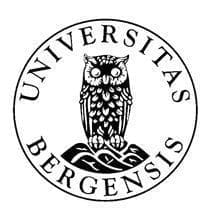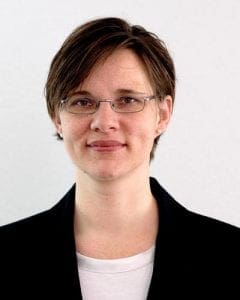Practitioner Profile: Birgit Kopainsky, University of Bergen (UiB), Norway
Welcome to Practitioner Profiles, a series of up-close blog-length interviews with experienced System Dynamics practitioners. We have a standard set of 10 questions and let practitioners take the responses in any direction they choose. They tell us about who they are, how they got involved with the field, how they work with clients, and in what new directions they may be heading. A new profile will be posted every few weeks during 2021.
For any questions or comments, please contact the editors of these interviews, Dr. Jack Homer ([email protected]) and Dr. Saras Chung ([email protected]).
For today’s spotlight, we talked with Birgit Kopainsky at the University of Bergen (UiB), Norway.
What kinds of SD projects do you do at the university?
A lot of our effort revolves around teaching the nine courses that are part of our two-year master’s program in System Dynamics. Our research projects center on sustainable development. Methodologically, we want to improve all aspects of SD practice, from knowledge acquisition to dissemination of insights. We try to bring together public and private-sector institutions and to give our students rich experiences with real-world SD applications.
What is distinctive in your approach to SD projects?
I would say it’s our human resources. In addition to the SD faculty, we have postdoctoral researchers, PhD students, and master students who help out. With these people, we can cover a broad range of tools and techniques, including data mining and analysis, experimental studies of decision making, innovative approaches to strategy development and policy design, and interactive learning environments.
In what way is your organization perhaps different from others doing SD project work?
We have about 20 new SD master students every year. This is a wonderful resource in so many ways. They come with a broad range of backgrounds, skills, and expertise—there is always somebody who fits the requirements of a given project. It is inspirational working with these students who are so ready to make an impact in the world.
What is your role in your organization, especially with regard to the SD project work?
I am one of three full professors in the SD group, and we all do some project work. I am, as my colleagues say, “the one who is able to talk to people”. I try to strengthen the links between research and application and am eager to get more private and public sector institutions intrigued about SD. I am thus always on the lookout for internship opportunities, hackathons, short courses, and seminars on modeling. I say yes to most requests for collaboration, because they usually end up improving the visibility of SD and expanding its reach.
How did you originally get interested in SD, and when was that?
In 2002 I was supposed to write a conventional agricultural economics PhD thesis and couldn’t satisfy my supervisor whose whole career had been devoted to optimization models and econometrics. Once he recognized that I was not feeling comfortable with optimization, he suggested that I might try out what he called “these systems approaches”.
With regard to SD project work, what accomplishments are you proud of?
I am excited about the work I have been doing with farming communities in developing countries where we have to accommodate to local circumstances (e.g., lack of electricity). This requires some creativity and improvisation, but it allows me to see how change happens. Also, some of our food system modeling has led to a revision of the nutrition recommendations in my home country of Switzerland. I feel I am doing something right when we get invited into a project consortium where SD plays an important role in synthesizing the other, mostly non-SD, work packages.
What challenges have you experienced with respect to SD project work?
SD has both its enthusiasts and its critics, and sometimes the first can be more challenging than the second. Enthusiasts are new clients or project partners who are unrealistically optimistic about how SD might help. While enthusiasts may sometimes help open doors, they can also create problems by overpromising and creating false expectations.
What kinds of SD project work would you like to be doing over the next 5 years?
I would like to continue working on sustainable development and resilience issues. I’d like to study more systematically how SD models can provide insights that will lead to real change.
Recent Posts
2025 Award Winners at the International System Dynamics Conference
Dive into the prestigious awards and honorable mentions of the International System Dynamics Conference, celebrating trailblazers and emerging talents in the field
System Dynamics in Policy Design: A Case Study from India’s Renewable Energy Sector
System dynamics modeling enhances renewable energy policy design by addressing complexity, feedback loops, and key policy levers for biomass-based electricity generation in India.
Process Modeling and Optimization with System Dynamics and the Theory of constraints
Explore how Consideo’s iModeler integrates System Dynamics and the Theory of Constraints for process optimization, dynamic bottleneck management, and resource allocation.
Upcoming Events

A Whole World of Perspectives – 13the South African System Dynamics Conference – Free Workshop
A Whole World Perspective or A Whole World OF PerspectiveS Join use to develop a simple system dynamics model to better understand perplexing problem.
Recent Business cases
System Dynamics Helps Evaluate Anticipatory Action on Cholera Outbreaks
Humanitarian agencies encourage anticipatory action in disaster response to cholera outbreaks in the Democratic Republic of Congo.
Management Design for Planted Forests in Japan Using System Dynamics
Hanno City in Saitama Prefecture used a system dynamics model to enable detailed analysis of labor requirements and changes in forest conditions.
Solving Bottlenecks in Dairy Production Facilities with System Dynamics
FriedslandCampina employed system dynamics to strategically enhance production efficiency in the midst of factory merging.





